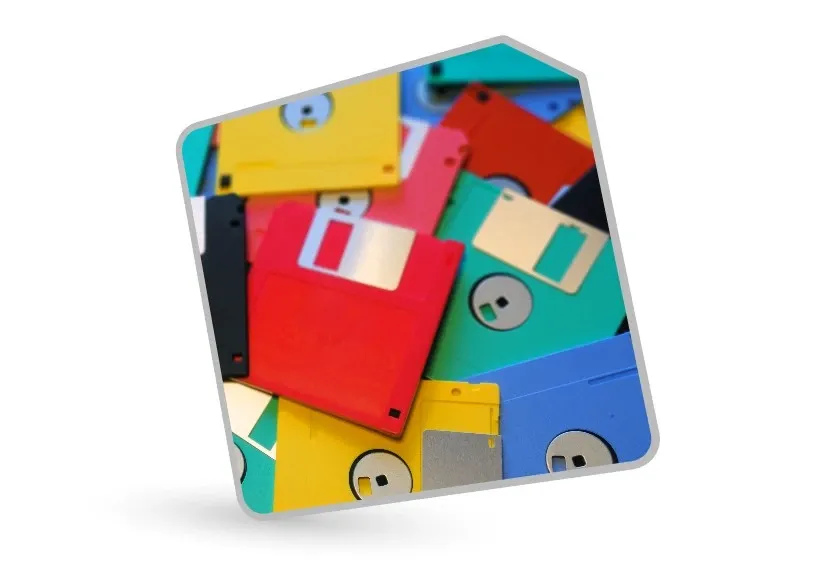One of LSB DATA's specialties is the provision of complex IT solutions for the electronic components distribution industry. An important area of this activity is data processing and exchange - sharing prices and stock levels of suppliers and handling the entire purchase and sale process. In companies that provide their customers with electronic components, both in the form of just-in-time deliveries planned well in advance and intervention purchases, it is crucial to know where and for how much you can buy these products.

Romantic 90's
In the mid-1990s, our first applications were powered by data delivered on floppy disks. Initially, we prepared dedicated data import programs - we had a separate importer for each data source. Later, we changed the mechanism to a two-stage one - first we normalized the data to a universal, wide format, and then this standardized file was imported by a special program feeding the database. Interestingly, in the later days of the Internet, this idea also works.

In the years that followed, large vendors made their systems available through dial-up terminals in addition to or instead of sending floppy disks. At that time, we were writing resident programs that capture screens and collect data into files that were later processed and distributed within the client's organization.
Modems
For several years, modems have been a very important tool in the automation of data processing and exchange. Multi-branch organizations exchanged orders, their statuses or invoices using special BBS (Bulletin Board Systems) applications, which at the peak of their development allowed for planned, fully automatic connections and file exchange.
Internet
A few years later, the Internet revolutionized this process - thanks to the possibility of sending files as attachments to e-mails or issuing them via ftp or http, it was possible to increase the frequency of updates and further automate them.
Using these technologies, the data exchange systems prepared and managed by us achieved the efficiency of several data exchanges per hour between two nodes. There could be dozens of such nodes in one installation.
API time
It would seem that in the era of the Internet the process of obtaining information will be simplified and accelerated. This is of course true - suppliers provide information and the opportunity to purchase their products in the form of websites, B2B and B2C e-commerce systems, but "jumping" through applications, sometimes a dozen or so, is highly ineffective for a merchant or buyer. This is where API solutions have found their place, allowing for deep integration between systems that operate online. Using the API allows you to obtain, for example, the current price and stock of the product you are looking for. This solution allows for the presentation of results from many sources in one search engine, integrated with the sales and purchase systems, which enables their further, natural processing in the client's system.
EDI
In the meantime, first modem and then Internet closed and open EDI networks were developing, using various message standards (EDIFACT, X12, XML, JSON or even CSV). Today it is a real Tower of Babel - various formats and methods of data transfer are used. Here, too, we have our history and advanced and stable solutions that have been operating and developed for years.
Let it do itself
From the very beginning, we focused on process automation. After all, that's what computers are for. Where it is not possible to connect online systems or it is done in a limited way, we try to automate these integrations between partner systems. We develop mechanisms and proprietary tools that support these processes so that the human factor is minimized and delays in updating information give the illusion of online work (especially where such work is not yet possible).
Control is the highest degree of trust
With such important economic processes as bidding and ordering, especially in times of shortage of goods and limitations in supply chains, the quality of data and the certainty of its transmission are crucial. We use multi-level controlling in our solutions. Process failure alerts are sent to the service in the form of e-mails, text messages and messengers, but also in aggregated form to dashboards presenting the current status and history of individual tasks. This allows for a quick reaction - repairing the failure or launching an alternative solution. The show must go on!
Today…

Integration is king today.
We currently implement and maintain projects that support our clients in integrating their systems with those of suppliers and their clients. These are both systems supporting sourcing, allowing for effective search and offering of products, but also supporting placing and updating orders, as well as handling deliveries and forwarding. Depending on the needs and capabilities, these are solutions that penetrate deeply into the IT infrastructure and customer applications or independent, external subsystems that allow for the automation of data processing and exchange processes.
Need help with data processing?
Have an idea? Let's talk